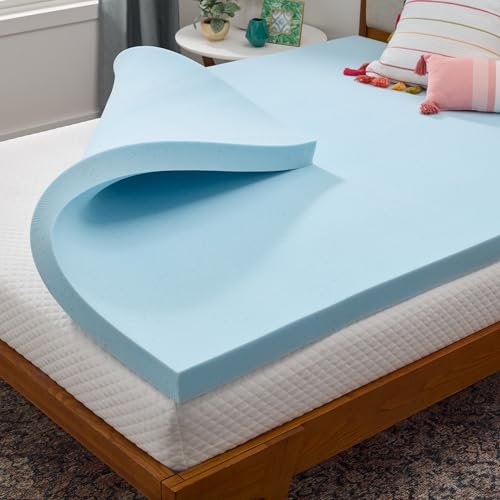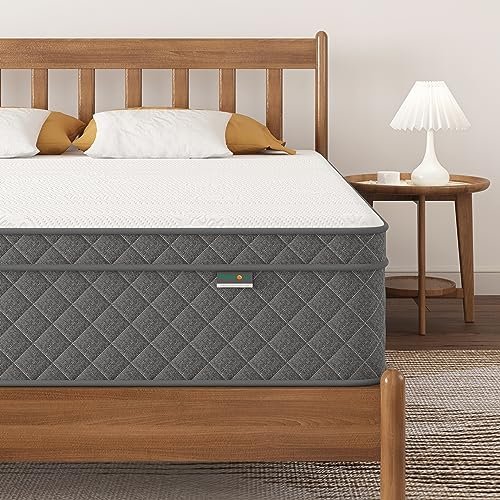
Toppers for Mattresses: Finding the Perfect One for You – Toppers for Mattresses What is Best
Recommended Product:
Are you waking up with aches and pains? Is your mattress just not as comfortable as it used to be? A mattress topper could be the solution! This guide will walk you through everything you need to know to choose the best mattress topper for your needs, helping you achieve a better night’s sleep.
When considering mattress comfort, it’s essential to explore various options and understand which toppers for mattresses what is best for your sleep style.
Understanding Your Needs: The Foundation for Success
Before diving into topper types, it’s crucial to identify your sleep challenges and preferences. Ask yourself these questions:
- What’s your budget? Toppers range in price significantly. Setting a budget upfront helps narrow your search.
- What are your sleep position preferences? Side sleepers need different support than back or stomach sleepers.
- What are your comfort preferences? Do you prefer a plush, soft feel, or something firmer? Consider your current mattress firmness – a soft topper on a soft mattress might be too soft, while a firm topper on a firm mattress could be too hard.
- Do you have any allergies or sensitivities? Look for hypoallergenic materials like organic cotton or bamboo.
- What is the size of your mattress? Ensure you purchase a topper that matches your mattress dimensions exactly.
Types of Mattress Toppers: A Deep Dive
Several types of mattress toppers cater to various needs and preferences:
- Memory Foam: Known for conforming to your body’s shape and pressure relief, memory foam toppers are excellent for side sleepers and those with aches and pains. However, they can retain heat.
- Latex: Highly durable and supportive, latex toppers offer a bouncy feel and excellent responsiveness. They’re a good option for all sleeping positions and tend to be more breathable than memory foam. Natural latex is a more eco-friendly choice.
- Down Alternative: These toppers provide a soft, plush feel, mimicking the comfort of down without the allergens. They’re generally more affordable than other options but offer less support.
- Wool: Wool toppers provide natural temperature regulation, keeping you cool in summer and warm in winter. They’re also naturally hypoallergenic and durable.
- Fiberfill: These budget-friendly toppers are soft and fluffy, but they tend to compress over time and lack the support of other options.
Recommended Product:
Step-by-Step Guide to Choosing and Using a Topper
- Assess your needs: Carefully consider the questions above to determine your ideal topper type and firmness.
- Check dimensions and depth: Measure your mattress accurately to ensure the topper fits perfectly. Consider the depth of the topper – a thicker topper offers more cushioning but might alter the fit of your sheets.
- Read reviews (but focus on overall trends, not specific products): Look for patterns in what users like and dislike about different topper types.
- Choose your material: Select the material that best suits your comfort preferences and budget.
- Purchase your topper: Buy from a reputable retailer with a good return policy.
- Place the topper on your mattress: Ensure it is centered and fits snugly.
- Try it out!: Allow a few nights to adjust to your new topper.
Common Mistakes to Avoid:
- Ignoring your sleep position: Choosing a topper without considering your sleeping position can lead to discomfort.
- Neglecting your budget: Overspending can lead to buyer’s remorse, while under-spending might result in a low-quality topper.
- Not considering the topper’s depth: Too thick and your sheets might not fit properly; too thin and you may not see a significant difference in comfort.
- Failing to read reviews (focus on trends, not product reviews): Learning from other people’s experiences can save you headaches.
- Not considering maintenance: Some toppers require regular airing or cleaning.
Boosting Your Sleep Quality: Beyond the Topper
While a mattress topper can significantly improve your sleep, remember that a holistic approach is key. Factors like your pillow, bedroom temperature, and sleep hygiene all play a role in achieving restful sleep.
By carefully considering your needs and following these steps, you can find the perfect mattress topper to transform your sleep experience. Sweet dreams!
Recommended Product:
FAQ
Q. What is the best mattress topper material for temperature regulation?
A. For temperature regulation, consider toppers made from natural materials like wool or cotton. Wool is excellent at wicking away moisture, keeping you cool in the summer and warm in the winter. Cotton is a breathable option that’s good for hot sleepers. Some synthetic materials, like Tencel, also offer good temperature regulation. Avoid memory foam if you tend to overheat.
Q. What type of mattress topper is best for back pain?
A. A mattress topper that provides good support and pressure relief is crucial for back pain. A medium-firm topper made from latex or memory foam is often recommended. Latex offers excellent support and durability, while memory foam conforms to your body shape, reducing pressure points. However, ensure the memory foam is not too soft as it might sink too much and cause back pain. Consider a topper with a higher density for better support.
Q. Which mattress topper is best for side sleepers?
A. Side sleepers benefit from a topper that conforms to their body and cushions pressure points, particularly their hips and shoulders. Memory foam toppers are often a good choice for side sleepers because of their conforming properties. However, a plusher, higher-density memory foam is better to avoid sinking too deeply. Latex is another excellent option that provides support and conforms to the body.
Q. What is the best mattress topper for extending the life of my mattress?
A. A mattress topper can help protect your mattress from wear and tear, extending its life. A simple cotton or polyester topper provides a protective barrier against spills and stains. However, if you want added comfort and support, a memory foam or latex topper might be preferable. The added layer of cushioning can reduce the direct pressure on the mattress itself, prolonging its lifespan.
Q. What is the best mattress topper thickness?
A. The best thickness for a mattress topper depends on your individual needs and preferences. Thinner toppers (2-3 inches) are generally better for adding a layer of comfort without significantly altering the feel of your existing mattress. Thicker toppers (4 inches or more) offer more substantial cushioning and support, but can change the feel dramatically and may not be suitable for all mattresses or bed frames. Consider what level of cushioning and support you need before choosing a thickness.
Q. How do I clean my mattress topper?
A. Cleaning instructions vary depending on the material. Always check the manufacturer’s care label. Many memory foam and latex toppers can be spot-cleaned with a mild detergent and water. Some cotton and polyester toppers may be machine washable, but always check the label before attempting to wash. For any topper, airing it out regularly helps to prevent the build-up of moisture and odors.



